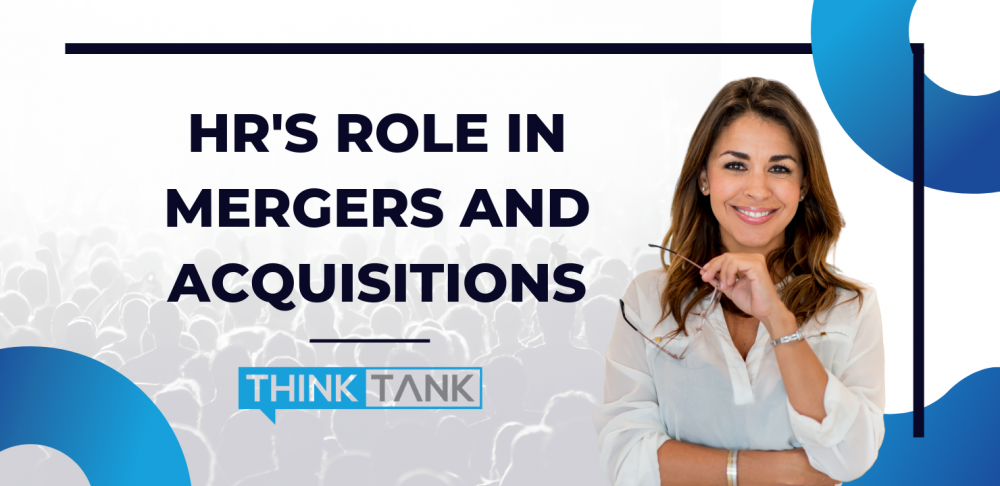Existing Client? Login
Article
HR's Role in Mergers and Acquisitions

Mergers and acquisitions (M&A) have become an increasingly common business strategy. M&A transactions increased from $3.8 trillion in 2020 to $5.1 trillion in 2021, according to professional services network KPMG. Despite the increase in M&A activity, approximately 70% to 90% of M&A transactions fail to reach their expected strategic and financial aims, according to research from the Harvard Business Review. Often, M&A transactions can struggle to meet their intended aims due to people-related factors, such as mismatched organizational cultures and management styles, lack of communication and trust, loss of key talent and ambiguous long-term goals. HR professionals can play a pivotal role in preventing these types of failures and ensuring a smooth transition for employees on both sides of an M&A transaction.
Understanding HR's role in M&A activity can be vital to ensuring a successful transaction. This article provides an overview of HR's role in M&A activity before, during and after the transaction. It's not intended to be a comprehensive guide but explores general issues for HR professionals to consider.
Understanding HR's M&A Role
The terms mergers and acquisitions are often used interchangeably, but they have important differences. Mergers combine two separate organizations into a single, new entity. However, with acquisitions, one organization takes over another outright and establishes itself as the new owner. In most cases, an acquisition is technically a merger, as the new entity will merge with an asset of the organization. Regardless, the common use of these terms can create some differences in how the activity might impact a workforce and HR's role.
Traditionally, most have viewed HR's role in M&A deals as limited to advising management or dealmakers on HR-related issues, such as talent decisions and integrating HR practices. However, M&A deals create a myriad of people issues that must be resolved quickly and effectively. This is where HR professionals can have the greatest impact on M&A transactions.
Leading up to and immediately following M&A transactions, employees start to consider their personal situation. If employees feel uncertain about their place in the new organization, it's more likely they'll look for new opportunities. Recruiters know this and will target key talent immediately following an M&A deal announcement. The loss of key talent can diminish the overall value of any M&A transaction. How HR operates before, during and after M&A transactions is critical, especially when communicating with employees.
Before the Transaction
HR's primary role prior to any M&A transaction is conducting due diligence. During a deal, HR professionals provide critical information to assist in evaluating the transaction and assessing potential risks and liabilities.
HR evaluates the following aspects of a target organization:
- Talent
- Culture
- Employee benefits plans
- Compensation programs
- Employment contracts and policies
- Potential liabilities
Reviewing retirement benefits can be particularly important prior to an M&A transaction to assess whether a target organization's retirement plans are overfunded, underfunded or vested improperly. HR usually works closely with legal teams to ensure organizations comply with federal, state and local laws. Failing to conduct careful due diligence can result in organizations assuming significant liabilities during M&A transactions.
HR professionals from both organizations need to determine whether the entities' organizational cultures are compatible. This can include analyzing each organization's growth and turnover rates, management styles, employee attitudes regarding embracing a new culture, and benefits programs. This can help to ensure a smooth transition and cultural integration of the organizations.
For organizations being acquired, HR professionals typically partner with the other organization's HR team to resolve potential issues and provide information and data related to due diligence. This may require HR professionals to review and comply with nondisclosure agreements, as much of this information is considered confidential. They also support employees impacted by the transaction and ease their concerns and doubts. Doing so can increase employee confidence in the deal and help employees to remain productive during the transition process.
During the Transaction
HR professionals play a vital role during an M&A transaction as they are typically responsible for completing various significant tasks. Due to breadth of involvement, HR can help define the blueprint of all aspects of the new organization and access the deal's impact on employees. This section outlines some of HR's key responsibilities during a transaction.
Communicating with Employees
Employee communication is a critical HR function during M&A transactions. How HR shares information with employees about the transaction, especially those most affected, can greatly impact the deal's success. When done effectively, employee communication can improve the odds that the deal will be successful. Not only can communication provide employees with timelines and updates about the integration, but it can also provide employees with a shared vision of the new organization and help win employees over.
M&A transactions can be difficult for employees, and some are likely to leave. HR professionals can reach out to employees and conduct interviews to help employees feel heard and valued. HR should be honest with employees about what's happening, what's planned and when key decisions will be made. By treating individuals whom the M&A deal may negatively impact with respect, HR can send a strong message to the remaining employees about how the new organization deals with and prioritizes employees.
Integrating Cultures
M&A transactions often can lead to a culture clash. Since culture issues can sink the success of any M&A deal, blending culture is a top HR priority. HR professionals must integrate and redefine the new organization's culture and values. They can do this by establishing a shared organizational vision, mission and strategy. Checking in with acquired employees can provide valuable insights as organizations attempt to align cultures.
Ensuring Legal Compliance
Ensuring that organizations comply with applicable laws often falls on HR's shoulders. Employees are often released as a result of M&A activity. Each organization's HR professionals must ensure they follow all applicable laws and notification requirements when reducing staff.
M&A transactions may result in organizations being forced to comply with new laws. For instance, if an M&A deal results in an organization acquiring non-exempt employees, it must comply with legal obligations for these new employees under the Fair Labor Standards Act. Additionally, to protect employees from losing legal protections, some regulations require employers to comply with laws even if they do not satisfy the legal requirements to be considered covered employers. For example, suppose a new organization is a successor in interest. In that case, employees from the previous organization cannot be deprived of their rights under the Family and Medical Leave Act (FMLA) even if the new organization does not meet the FMLA's covered employer requirements.
M&A transactions are often legally complex, and this article only provides a few examples of the potential legal issues organizations must consider. Due to the complex nature of this activity, employers are encouraged to seek legal counsel to discuss any specific issues and concerns.
Making Technology and Outsourcing Decisions
HR may need to decide which systems or technology the new organization will keep, replace or eliminate. It may also need to consider which organizational processes or functions will be outsourced. While this may seem straightforward, it requires HR professionals to painstakingly assess the technology and systems of all organizations involved in an M&A transaction. Additionally, HR must act quickly to integrate technology and systems to avoid disrupting the new organization's operations.
After the Transaction
Once an M&A transaction is completed, HR plays a key role in integrating the organizations. This can be particularly challenging and labor-intensive. HR professionals typically undertake the following tasks:
- Create new policies. After an M&A event, HR must create or merge employment policies, rules and guidelines to establish workplace governance and set employee expectations for the new organization. This may include creating attendance, paid time off, sick leave, drug testing, anti-discrimination and anti-retaliation policies.
- Manage talent. HR plays a critical role in determining which employees will stay, are replaced or are eliminated after an M&A event. This includes identifying employees that may be needed to ensure a smooth transition but aren't critical to the long-term success of the new organization. HR professionals typically spend a great deal of time evaluating employees since most M&A transactions expect to increase organizational efficiency by eliminating redundant roles. HR assesses employee knowledge, skills and capabilities by interviewing and potentially testing employees. Once completed, HR takes steps to re-recruit and place employees. HR must also eliminate unnecessary positions by terminating individuals, offering early retirement or leaving roles vacant.
- Retain key talent. To ensure a successful M&A transaction, organizations need to retain key employees. This often means reaching out directly to these employees to discuss their career goals and address concerns generated by the M&A deal. HR needs to ensure there's a place for key talent in the new organization and adequate career growth opportunities for them.
- Develop compensation strategies. HR creates cohesive compensation structures for the new organization, including executive compensation strategies. Typically, this requires HR professionals to unify the compensation structures and incentives of multiple organizations. Any new compensation structure must be clearly and effectively communicated to employees.
- Create employee benefits programs. Similar to creating compensation structures, HR may need to fit existing employee benefits programs into a unified plan for the new organization. If that's not possible, HR professionals may need to establish new benefits programs for the new organization, which can be complicated and time-consuming. Again, communicating any new benefits programs to employees is critical.
Summary
HR is essential to the success of any M&A transaction. By ensuring HR professionals have the necessary skills and resources to steer the integration effectively, organizations can help ensure their M&A deals reach their expected strategic and financial aims.
For more workplace resources, contact ThinkTank Insurance Partners today.
This article is not intended to be exhaustive nor should any discussion or opinions be construed as professional advice.

Marty Thomas
Marty has spent most of the last 20 years developing software in the marketing space and creating pathways for software systems to talk to each other with high efficiency. He heads our digital marketing efforts as well as oversees any technology implementations for our clients. As a partner, Marty is also responsible for internal systems in which help our team communicates with each other and our clients.